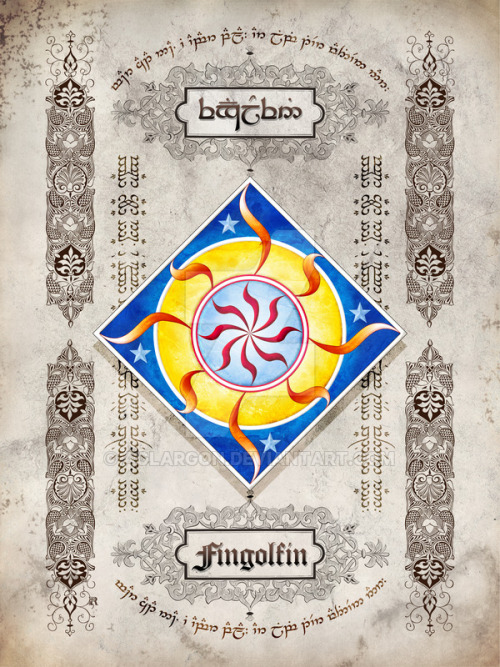#sarati
-Tengwar&Sarati inscriptions (Q): Már cata ná, i ambar palla. Ar limbi tier vantien nar.
-Translation: Home is behind, the world wide. And many paths are for walking.FINGOLFIN
Fingolfin’s father-name was Ñolofinwë (Quenya: “Wise Finwë”, from the Quenyan ‘ngolod’ [“wise”]; pron. Noldorin [ˌŋoloˈfinwe], Vanyarin [ˌŋoloˈɸinwe], 3rd Age Exilic Quenya [ˌnoloˈfinwe]). His mother-name was Aracáno (“High Chieftain”, from ara [“high”] and káno [“chieftain”]; pron. [ˌaraˈkaːno]). Fingolfin is the Sindarin form of his father-name, with the word Finwë added to the beginning (the actual Quenya equivalent would be Finwë Ñolofinwë). The addition was done by Fingolfin himself in pursuance of his rightful claim to be High King of the Noldor after his father’s death.
Fingolfin was the second High King of the Ñoldor in Beleriand, the Ñoldor being one of the three branches of Elves. He was the eldest son of Finwë and Indis, younger brother of Findis, older brother of Irimë and Finarfin, and the younger half-brother of Fëanor. He founded the House of Fingolfin, which ruled the Ñoldor in Middle-earth. His wife was Anairë and his children were Fingon, Turgon, Aredhel, and Argon. Fingolfin was said to be the strongest, most steadfast, and most valiant of Finwë’s sons.
Post link
TGW Day 4: Solo, Work & Crafts, Language

